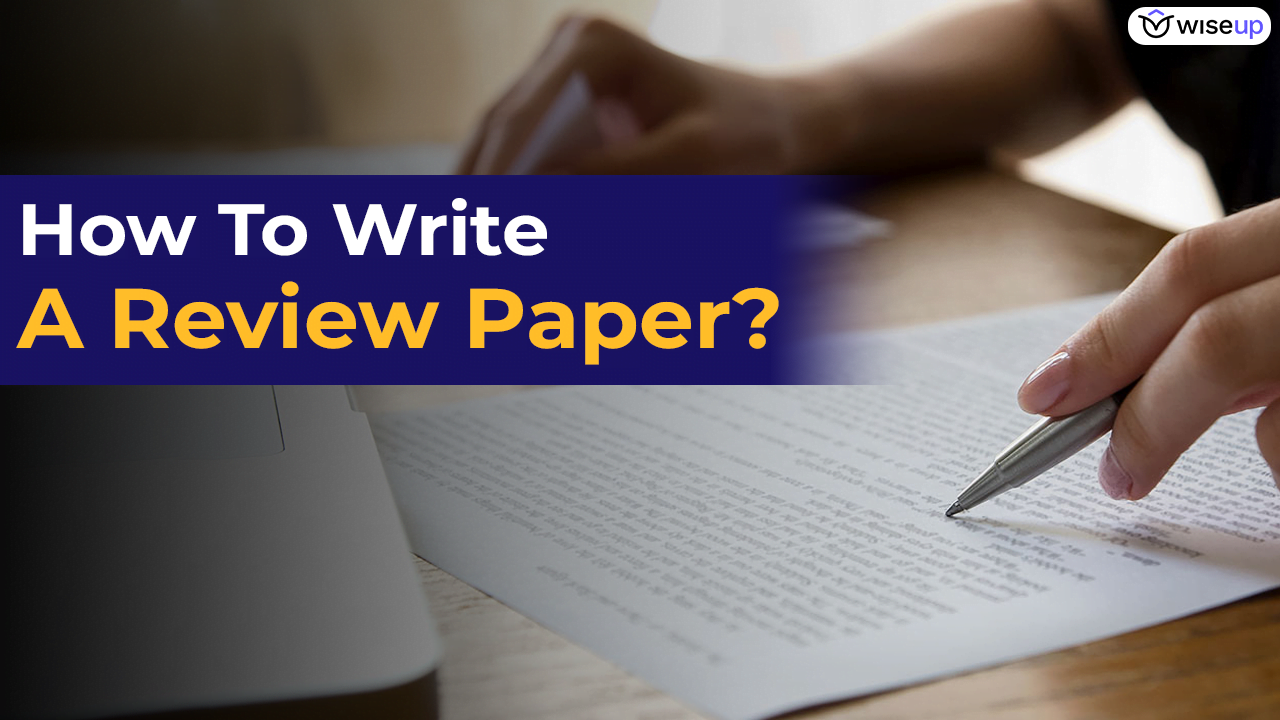Hi everyone! In this blog, we’ll dive into the world of review papers. We’ll start by exploring what a review paper is, then move on to selecting the right topic and cover the essentials of writing a compelling review paper. Whether you’re new to research or looking to refine your skills, this guide will help you master the process.
What is a Review Paper?
Summary of Existing Research: A review paper consolidates and summarizes findings from various studies, without conducting new research.
Analysis and Interpretation: It provides your analysis and opinions on the existing research, including evaluating results, identifying gaps, and suggesting future directions.
Contribution to Research Community: It helps researchers by compiling and synthesizing information from multiple sources, making it easier to understand the current state of research in a field.

How To Choose a Topic for a Review Paper?
Identify Research Gaps: Look for gaps in the existing literature where important topics or questions remain unaddressed.
Examine Existing Reviews: Review existing review papers in your field to identify overlooked areas or emerging trends that lack comprehensive analysis. Add the filter of “Review Articles” when you are searching

Assess Importance and Relevance: Ensure the topic you choose is significant and relevant to the field. It should address a meaningful gap or add value to ongoing research discussions.
Difference between a Review Paper & Research Paper
Before learning how to write, let’s understand the difference between the sections in a review paper and a research paper.
Generally a research paper has these sections: introduction, materials and methods, results and discussion and conclusion. But because there is no new research that is being conducted for a review paper, materials and methods, and results and discussion sections are not there.
Instead, you only have the introduction section, some body paragraphs and the conclusion section. Each body paragraph has a central theme to it where you share what other researchers have done on that particular theme, and you attach your interpretation and analysis to it.
The difference between the sections of a review paper and a research paper are summarised in the below table.

Sections of a Review Paper
A brief overview about the sections in a review paper .
Introduction
The information that needs to come under introduction are mentioned sequentially below.
Background: Briefly introduce the broader context of the topic.
Importance of the Topic: Explain why the topic is significant in the field of study.
Key Definitions: Define any essential terms or concepts related to the topic.
Objective of the Review: Clearly state the purpose of the review and what it aims to achieve.
Scope of the Review: Specify the scope and limitations of the review, such as the time frame, types of studies, or specific areas focused on.
Overview of the Structure: Briefly outline how the paper is organized, helping the reader navigate through the sections.
Example: ‘Review on Current Technologies for Decolourisation of Textile Wastewaters: Perspectives for Anaerobic Biotechnology’ – In this paper, the introduction starts with how the demand for textile products has increased and been a major cause for water pollution globally. This sets the context of the broader problem that the paper is trying to address. Shown below is a screenshot from the paper.

Body Paragraphs:
Writing effective body paragraphs for a review paper involves synthesizing existing research, analyzing key trends, and providing critical insights. Here’s a structured approach:
1. Topic Introduction
Start with a topic sentence that introduces the focus of the paragraph. Briefly mention why this topic is important in the context of the broader field.
Example – In the below screenshot taken from the same review paper discussed above, the authors initially discuss what would be covered broadly -“biological and non-biological processes for dye decolourisation”, with focus on “azo dyes” and the reason for being the focus – “largest class of dyes in the industries”.

2. Synthesize Research
Summarize key studies related to the topic. Focus on the major findings, methodologies, and how they contribute to the understanding of the subject.
3. Critique the Literature
Evaluate the strengths and weaknesses of the studies. Highlight any limitations in methodologies or gaps in the literature. Discuss controversies or inconsistencies between studies, and offer potential explanations for the differences in findings.
4. Identify Trends and Patterns
Point out any emerging patterns or trends in the literature. This can include recurring themes, dominant methodologies, or shifts in the focus of research over time.
5. Transition to the Next Point
End the paragraph with a transition sentence that leads to the next topic, maintaining the flow between sections.
By following this approach, your body paragraphs will be well-organized, analytical, and contribute to a cohesive review.
The following example taken from the same review paper discussed above depicts all these elements.

For a more detailed explaination on this, check out the video below:
Conclusion
- Summarize key findings without introducing new information.
- Highlight significance of the research in advancing the field.
- Point out gaps and limitations in the literature.
- Suggest future research to address unresolved issues.
- Close with a final thought on the future impact of the field.
The screenshot of the conclusion taken from the same review paper discussed above is shown.

Commonly asked questions on review papers
What should be the length of a review paper?
The length varies by topic but typically ranges from 7-8 pages to 20-30 pages. Review papers in your field can help gauge the appropriate length.
How many articles should I cite?
Aim to cite at least 50-70 papers. This number ensures a comprehensive review and summary of the existing literature.
How should I manage so many articles?
Use reference management software like Zotero, Mendeley, or JabRef to organize and streamline your citations.
Who can write a review paper?
Anyone can write a review paper, regardless of experience or resources. Whether you’re a first-year student or a seasoned researcher, you can effectively write a review paper solo or with a team.
Hope this blog gave you some confidence about how to go about writing a review paper. If you wish to learn how to write a research paper in detail, you can join our Research Paper Writing Course
We wish you all the best for your research journey ahead! For any queries, feel free to drop a comment and we will get back to you at the earliest 🙂




